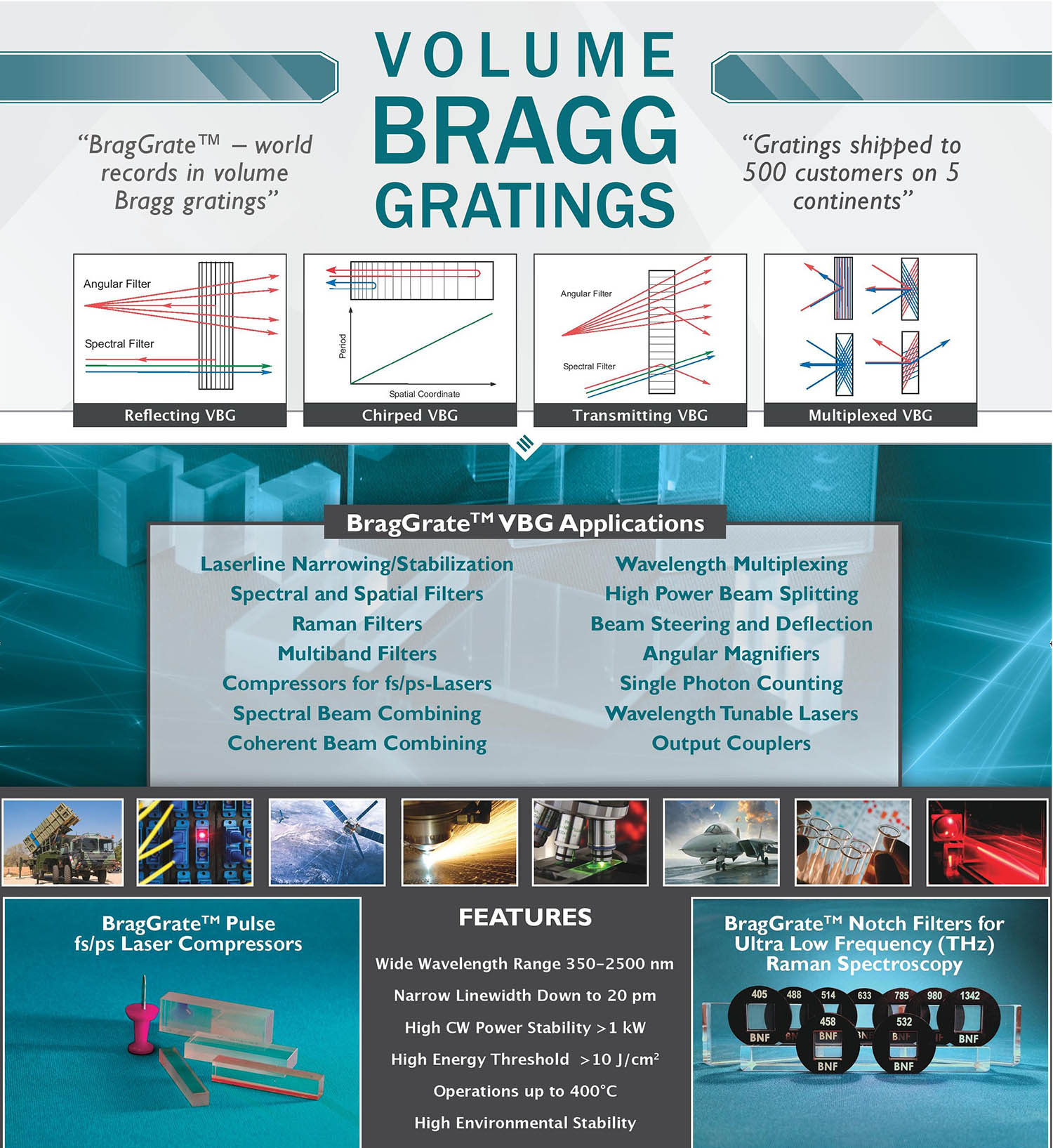Reflecting Bragg Gratings (RBG)
RBG diffractive optical element is a volume Bragg grating operating in reflecting geometry when a diffracted beam crosses the grating surface frontally oriented to an incident beam. One of the particular cases of this geometry is the retro-reflection of an incident beam. There are several OptiGrate products based on RBG elements with different reflectivity:
- BragGrate™ Mirror with reflectivity range from 5 to 99% for spectral and thermal management of lasers. A BragGrate™ mirror incorporated in a laser resonator enables the laser line spectral narrowing and thermal stabilization.
- BragGrate™ Notch Filter is RBG with very high diffraction efficiency, typically in a range of 90-99.9% that serves as a band-stop filter reflecting one narrow laser line out of the transmitted beam.
- BragGrate™ Combiner is a high reflectivity (90-99%) RBG that is used for spectral beam combining. These elements enable combining of laser radiation from multiple sources with offset wavelengths into a single beam with increased brightness.
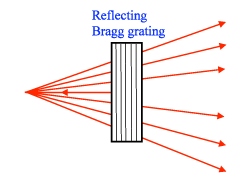
Schematics of RBG operation. RBG works as a diaphragm in the angular space. At the same time, it works as slits in the spectral space.
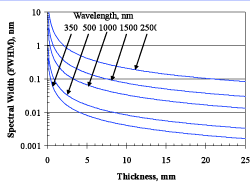
Spectral width of RBG as a function of grating thickness and wavelength.
Transmitting Bragg Gratings (TBG)
TBG diffractive optical element is a volume Bragg grating, operating in transmitting geometry when the diffracted beam crosses the back surface of the grating. OptiGrate products based on transmitting TBG element are as follows:
- BragGrate™ Deflector is a TBG enabling narrow spectral and angular selection of the incident light. The narrow line is deflected from the beam while the rest of the beam passes through unaffected. This can be used for angular magnification, wide-angle beam steering systems, narrow band spectral selection, and beam sampling.
- BragGrate™ Combiner can also implement high reflectivity (90-99%) TBG for spectral beam combining. These elements enable combining of laser radiation from multiple sources with offset wavelengths into a single beam with increased brightness.
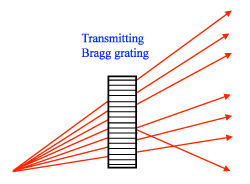
Schematics of RBG operation. RBG works as a diaphragm in the angular space. At the same time, it works as slits in the spectral space.
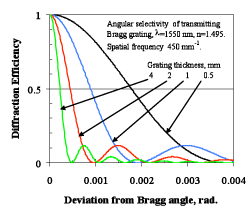
Spectral width of RBG as a function of grating thickness and wavelength.
Chirped Bragg Gratings (CBG)
CBG diffractive optical element is a reflecting Bragg grating with a period gradually varying along direction of beam propagation. This feature results in reflection of different wavelengths from different holographically recorded planes inside the grating. OptiGrate products based on CBG elements are:
- BragGrate™ Pulse is CBG that enables stretching and compression of ultrashort laser pulses. The same element can be used as a stretcher or compressor by changing the direction of the light propagation through the grating.
- BragGrate™ Tuner is CBG that can be used as an output coupler or HR mirror in a laser resonator. It enables both spectral stabilization and tuning of the laser radiation.
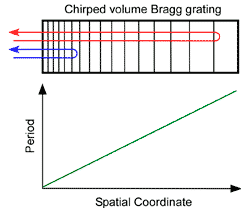
Schematics of CBG operation. CBGs allow extending of the spectral width of a Bragg mirror to tens of nanometers. They produce spatial separation of different wavelengths in a diffracted beam (chirping of laser pulses).

